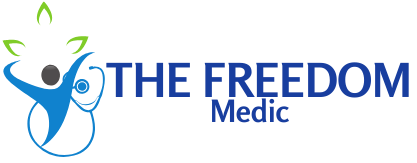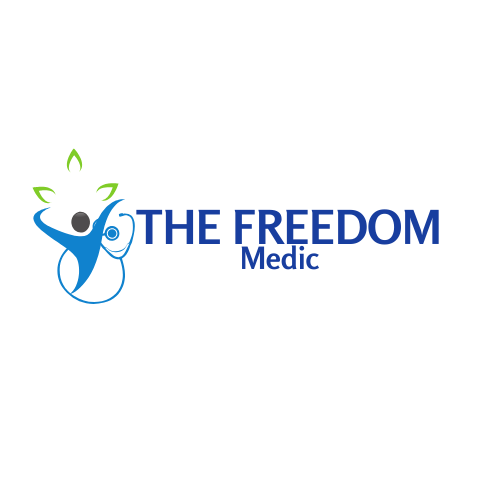Do you find yourself constantly held back by negative thoughts and self-doubt? It’s time to take control and break free from the constraints of limiting beliefs. In this blog post, we will explore practical strategies and techniques to help rewire your mindset and overcome the barriers that are holding you back. By the end of this, you will have the tools and knowledge to empower yourself and achieve your goals without the interference of limiting beliefs.
Identifying Your Limiting Beliefs
By identifying your limiting beliefs, you can begin to understand the thought patterns that are holding you back. Take some time to reflect on the beliefs that you hold about yourself, your abilities, and the world around you. These beliefs may be ingrained from childhood or have developed as a result of past experiences. Once you have a clearer understanding of these beliefs, you can begin to work on overcoming them.
Common Types of Limiting Beliefs
Common types of limiting beliefs include self-doubt, imposter syndrome, fear of failure, perfectionism, and all-or-nothing thinking. These beliefs can manifest themselves in various areas of your life, such as relationships, career, and personal development. Recognizing these patterns of thought is the first step in challenging and changing them. Though it may be uncomfortable, it is important to confront these beliefs head-on in order to move past them.
| Self-doubt | Believing that you are not capable or worthy of success. |
| Imposter syndrome | Feeling like a fraud and that your accomplishments are not deserved. |
| Fear of failure | Avoiding taking risks for fear of not succeeding. |
| Perfectionism | Setting unrealistically high standards for yourself and feeling inadequate when you fall short. |
| All-or-nothing thinking | Believing that if you cannot achieve perfection, then it is not worth trying at all. |
Techniques for Self-Reflection and Discovery
One effective technique for identifying your limiting beliefs is journaling. By writing down your thoughts and feelings, you can begin to recognize recurring patterns and themes. Mindfulness meditation is another powerful tool for self-reflection, allowing you to observe your thoughts without judgment. Additionally, seeking feedback from trusted friends or a professional therapist can provide valuable insights into your thought processes and belief systems.
Challenging and Reframing Limiting Beliefs
Now that you have identified your limiting beliefs, it’s time to challenge and reframe them. One helpful resource for this process is the article “10 Limiting Beliefs and How to Overcome Them” which you can read here. This article provides practical tips and strategies for overcoming common limiting beliefs, offering valuable insights that can help you on your journey to personal growth and development.
The Power of Questioning Assumptions
One powerful way to challenge your limiting beliefs is by questioning the assumptions that underpin them. When you find yourself thinking a limiting thought, take a moment to ask yourself why you believe it. Are there any real facts that support this belief, or is it based on assumptions or past experiences? By questioning the validity of your beliefs, you can begin to see them in a new light and open yourself up to the possibility of change.
Cognitive Restructuring for Belief Transformation
Another effective strategy for challenging and reframing limiting beliefs is cognitive restructuring. This involves actively replacing negative, limiting thoughts with more positive and empowering ones. Whenever you catch yourself thinking a limiting belief, consciously challenge it by replacing it with a more positive and self-affirming thought. Over time, this practice can help to rewire your brain and shift your mindset towards a more empowered and optimistic outlook.

Strategies for Overcoming Limiting Beliefs
Despite the pervasive impact of limiting beliefs, there are several effective strategies you can use to overcome them. It’s important to recognize that overcoming limiting beliefs is a process that takes time, effort, and commitment. One helpful resource for understanding this process is the article on How to Overcome Self-Limiting Beliefs. Now, let’s explore some key strategies that can empower you to break free from these self-imposed limitations.
Developing a Growth Mindset
One effective approach for overcoming limiting beliefs is to cultivate a growth mindset. This involves embracing the belief that your abilities and intelligence can be developed through dedication and hard work. When you adopt a growth mindset, you are more likely to view challenges as opportunities for growth and learning. This can help you break free from the negative self-talk that accompanies limiting beliefs, and instead, you begin to see obstacles as surmountable and setbacks as temporary.
Implementing Affirmations and Visualization
Another powerful strategy for overcoming limiting beliefs is to utilize affirmations and visualization. By incorporating positive affirmations into your daily routine, you can begin to reshape your self-perception and challenge the negative beliefs that hold you back. Additionally, practicing visualization techniques can help you create a mental image of the success and fulfillment you desire, reinforcing the belief in your potential and breaking down the barriers created by limiting beliefs.
Sustaining Change and Preventing Relapse
Lastly, sustaining the changes you’ve made and preventing relapse are crucial to overcoming limiting beliefs in the long term. It’s important to recognize that the journey to overcoming limiting beliefs is ongoing and requires continuous effort. There will be times when you may feel vulnerable and old beliefs start to creep back in. The key is to stay vigilant and have strategies in place to prevent relapse.
Building Resilience Against Future Limiting Beliefs
Building resilience is essential in protecting yourself against future limiting beliefs. This involves developing a strong mindset and a positive outlook. By challenging negative thoughts and reinforcing positive beliefs, you can build resilience and arm yourself against future self-doubt. Also, practicing self-compassion and being kind to yourself during challenging times can help you bounce back from setbacks.
Continuous Personal Development and Support Systems
Continuous personal development involves actively seeking opportunities for growth and learning. This can be through reading self-help books, attending workshops, or seeking the guidance of a coach or mentor. Surrounding yourself with a supportive network of friends, family, and like-minded individuals can also provide the encouragement and accountability you need to stay on track. Engaging in regular self-reflection and evaluating your progress is also important to ensure you are continuously evolving and growing.


